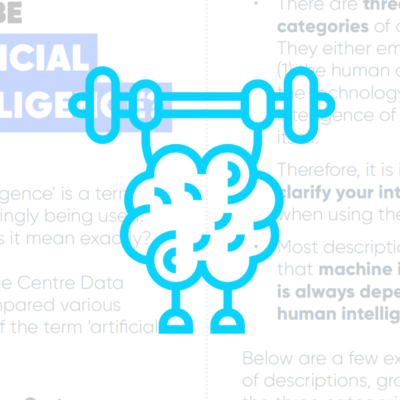brAInfood: What are foundation models?
Date of publication: March 2024
Within a short period of time, Generative AI tools have become indispensable for many. Generative AI makes it possible to create stunning images, compose music, or produce cool artwork. This form of AI generates new content based on learned patterns from existing data.
OpenAI's ChatGPT is one of the best-known generative AI tools. At the basis of ChatGPT and many other AI tools lie foundation models. These models enable the generation of new content based on existing data. How exactly do these foundation models work and what are they used for? The complexity of the underlying technology makes it hard to explain in a few sentences. Nevertheless, we briefly delve into the workings of foundation models in this brAInfood.
The European AI Act already places restrictions on the use of foundation models. Under the AI Act, they are subject to additional obligations regarding transparency and risk management. Despite the efficiency of foundation models and their ability to rapidly deploy new applications on a larger scale, there are considerations about their development and application. The training of foundation models on internet data can pose a risk. These data do not always represent the population, and can exhibit stereotypes, biases, and other inaccuracies.
In this brAInfood of March 2024 you will discover more about the pros and cons of foundation models.
With brAInfood, the Knowledge Centre Data & Society wants to provide easily accessible information about artificial intelligence. brAInfood is available under a CC BY 4.0 license, which means that you can reuse and remix this material, provided that you credit us as the source.
Cover photo by Alexander Park via Unsplash
